

OPERATIONS
ALMARAZ PLANT
At the end of the year, gross electricity production generated by the Almaraz nuclear power plant was 15,780 million kWh, and net production was 15,174 million kWh.
Gross electricity production for Unit I was 7,783 million kWh, and 7,998 million kWh for Unit II.
Refuelling and general maintenance activities have been performed at both Units: at Unit I from 4 January to 20 February and at Unit II from 7 November to 16 December.
There was an automatic trip of Unit I after completion of refuelling due to the failure of a power supply busbar breaker.
Also, the Alternative Emergency Management Centres (CAGE) were brought into service at both installations as required after Fukushima, to improve management capability in case of severe accidents. The CAGEs have been operational since 30 November.
Since late 2016, the Plant has been authorised by the Regulatory Authority (NSC), the Environmental Quality and Assessment and Natural Environment, DG, MINETAD Energy Policy DG and Almaraz Council to construct an Independent Spent Fuel Storage Installation (ISFSI).
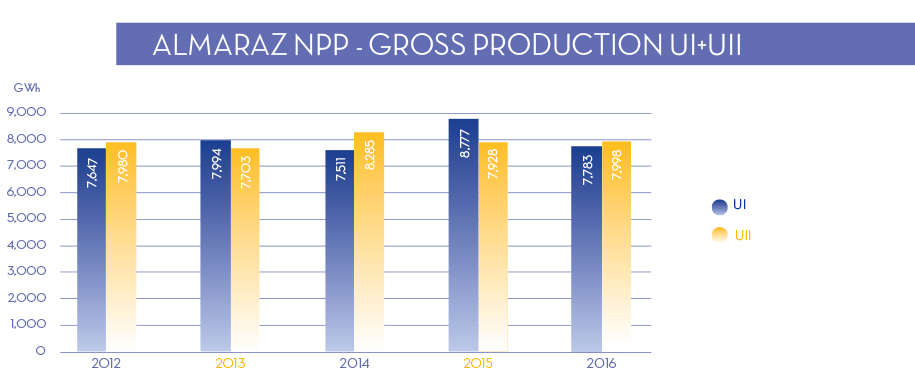
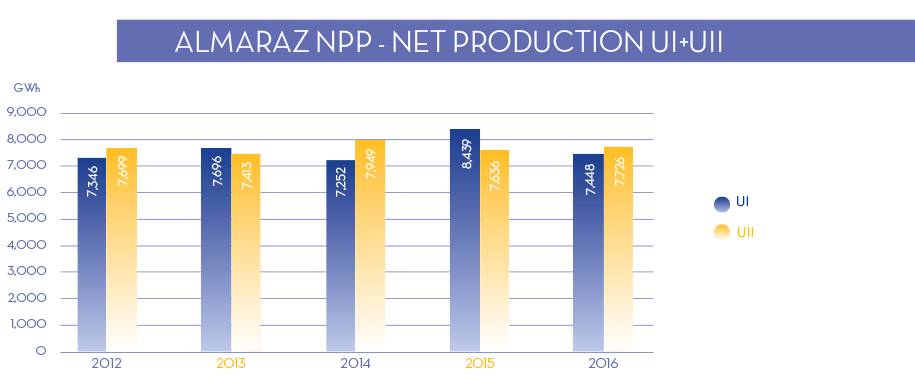
TRILLO PLANT
During 2016, the production of electricity generated by Trillo Nuclear Power Plant was 8,553 million kWh, the fourth best year since it began its commercial operation. The Plant continues without experiencing any automatic reactor shut-downs for the eighth consecutive year.
The new nuclear safety model has been implemented at Trillo Nuclear Power Plant since 30 June, based on creating Civil Guard Response Units located permanently inside nuclear power plants.
In addition, the Alternative Emergency Management Centre (CAGE) required after Fukushima to strengthen management capability in case of severe accidents, has been operational since 30 November.
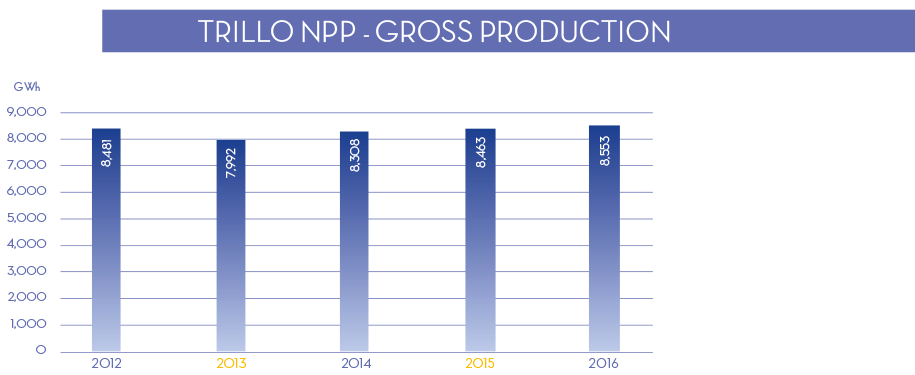
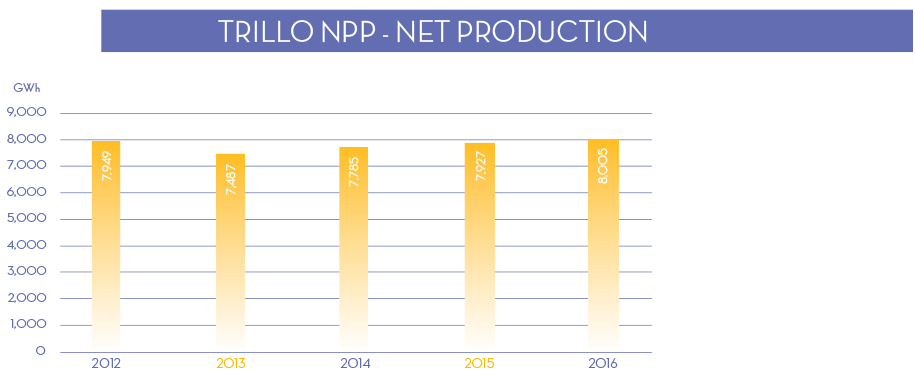
REFUELLING OUTAGES
ALMARAZ PLANT
In the first months of the year, 9,500 activities were performed during 48 days spent on the twenty-fourth refuelling and general maintenance of Unit I. In addition to routine work, 64 fuel elements were replaced, multiple preventive maintenance tasks were implemented and several design modifications were executed associated with different modernisation and safety improvement projects, such as making electrical systems independent (INDESEL) and the deployment of a redundant filtration unit in the fuel building (FREC), as well as others related to the installation of hydrogen recombiners and filtration systems.
The twenty-third refuelling and general maintenance of Unit II was carried out during the second half of the year and lasted 39 days. Over 9,000 planned activities were performed during the refuelling, including ultrasonic inspection of vessel head penetrations, visual inspection of the vessel, and inspection of the threaded zones of the flange, leak test of containment, spray system nozzle tests, and replacement of the set of dosimeters in accordance with the vessel external neutron dosimetry schedule.
TRILLO PLANT
The twenty-eighth refuelling outage took place between 29 April and 27 May; over 27 days requiring the services of more than forty specialised companies involving around a thousand personnel in addition to the regular staff.
Over 3,470 planned activities were performed. Besides replacing 40 fuel elements, the upper and lower bearings were inspected, as well as the seals of the three main pumps of the primary circuit, YD10, and there were induced current inspections of the control rods and 100% of the tubes of steam generator 10. A capacity test of the redundancy 4/8 batteries was performed during the outage, as well as an electrical and mechanical inspection of redundancy 3/7, the generation breaker and the valves in main steam loop 20. In addition, the joints of half shell 3 of the condenser were replaced and improvements made to the trip circuit of the main pumps in relation to spurious activations in case of fire.
RADIOLOGICAL SAFETY AND PROTECTION
During 2016, the installations operated completely normally, without producing any significant incident affecting nuclear safety or radiological protection, employees, or the plant environment.
The results obtained from the measurements performed show the dose rate for professionally exposed personnel was once again well below legal limits. In the case of Almaraz, the staff collective dose totalled 835.84 mSv per person for the combination of the two units, and at the Trillo Plant, the dose totalled 280.17 mSv per person.
TECHNOLOGICAL UPDATING
During 2016, CNAT continued according to plan with the investments as part of the process that has been implemented over recent years to improve safety, as well as maintaining plant availability by renewing obsolescent equipment.
All actions arising from the operating permit, and NSC stipulations resulting from audits and evaluations of the improvements implemented, have been completed at the Almaraz Plant. In this regard, in 2016 safety improvements have focused on completing projects such as FREQ (redundant filtration unit for air ventilation and filtration in both fuel buildings), adapting the remaining filtration units to RG 1.140 requirements, and INDESEL (implementing electrical independence measures for electrical systems in conformance with RG 1.75).
As part of the obsolescence renewal plan, actions have been completed such as replacement of recorders and cards, and tackling modernisation of the auxiliary feedwater turbopump control, by replacing the existing control with a new digital one, the first centre in Spain where this type of control has been introduced based on EPRI dedication guidelines for digital software, which received a favourable report from the NSC. This replacement has been performed successfully at U2 and is planned for U1 in 2017.
In addition, the manufacture and factory testing of the new refrigeration units for the Control Room and Breaker Room have been completed. These units use a refrigerant gas which has no adverse effect on the ozone layer. Implementation is scheduled for 2017 and 2018, and completion of the detailed design of the required modifications is in progress.
At Trillo Nuclear Power Plant and as part of improvements to the safety of the installation, implementation of the changes resulting from IS-30 have continued, and these included enhancements to provide 4-hour autonomous lighting for escape routes from fire areas with safety equipment, zoning and actions to improve fire protection (extension of automatic fire protection systems) in several areas and buildings at the Plant to comply with the requirement for protection/separation of trains required for safe shut-down.
At the Trillo Nuclear Power Plant, as at the Almaraz Nuclear Power Plant, as part of the obsolescence renewal plan, actions such as replacing recorders and cards have been completed in the I&C area, and the neumobolas system used to calibrate the nuclear instrumentation has been successfully renewed, and the supply and design of new level probes for the vessel has been finalised for implementation during the 2017 refuelling. On the electrical side, the manufacture and factory testing of new rectifiers have been completed and detailed design of the modification is to be implemented in redundancy 4 during the 2017 refuelling.
As part of the activities associated with the post-Fukushima improvements, the following were completed at both Plants: implementing the new TETRA wireless communications system, implementation of the H2 catalytic recombiners at Almaraz U2, completing the designs for installing the new filtered venting system for containment, which will enable controlled venting of containment to the pressures of its surroundings from its design pressure after an accident beyond the Plant design basis. The connections of the system with Containment have been implemented during the last refuelling at Unit 2, using one of the existing penetrations and after receipt of authorisation from MINETAD and a favourable NSC report.
On 30 November 2016, the respective Emergency Management Support Centres constructed at Almaraz and Trillo Plants were brought into operation after the required tests had been completed, and they received a favourable report from the NSC.
Finally, Almaraz NPP has continued activities related to the new Independent Spent Fuel Storage Installation (ISFSI), and after receiving authorisation in November 2016 from MINETAD for its construction, activities were performed throughout 2017 so that it would be available to accommodate ENUN 32P containers in the first half of 2018, following the required authorisation from MINETAD for stockpiling. In Trillo and as a consequence of using the new type of ENUN 32P container, activities required to adapt the installation and the current ISFSI to the new containers have been performed, with implementation scheduled for the second half of 2017.
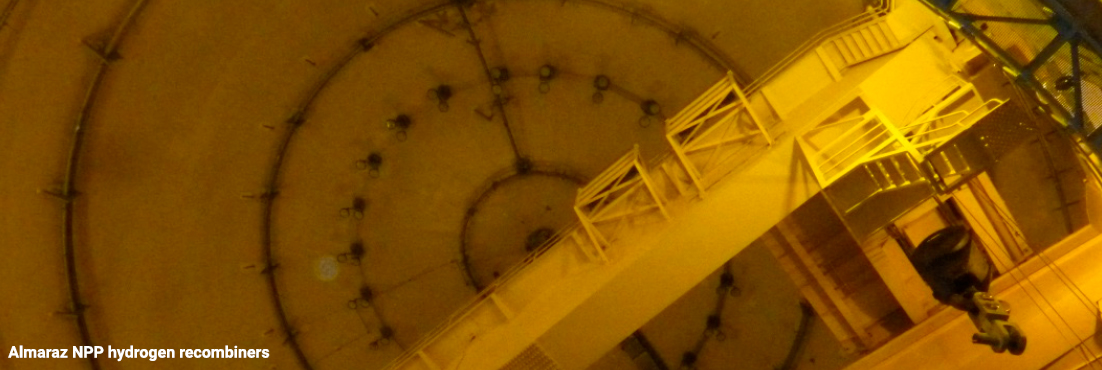
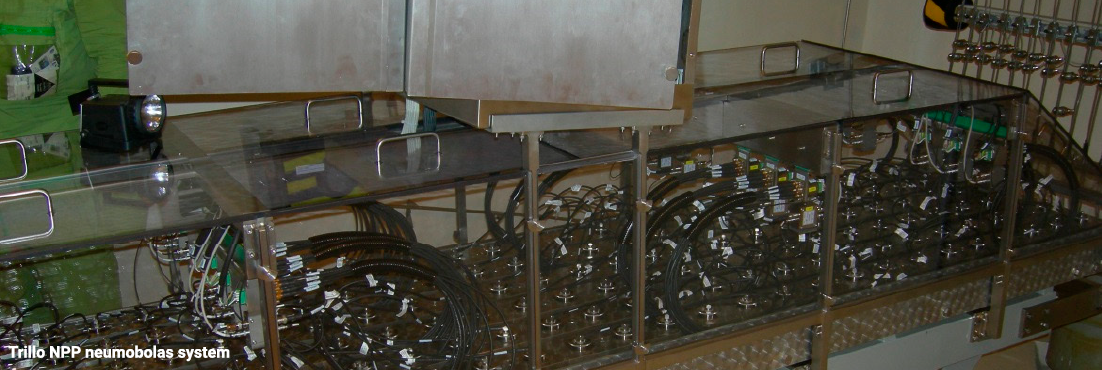
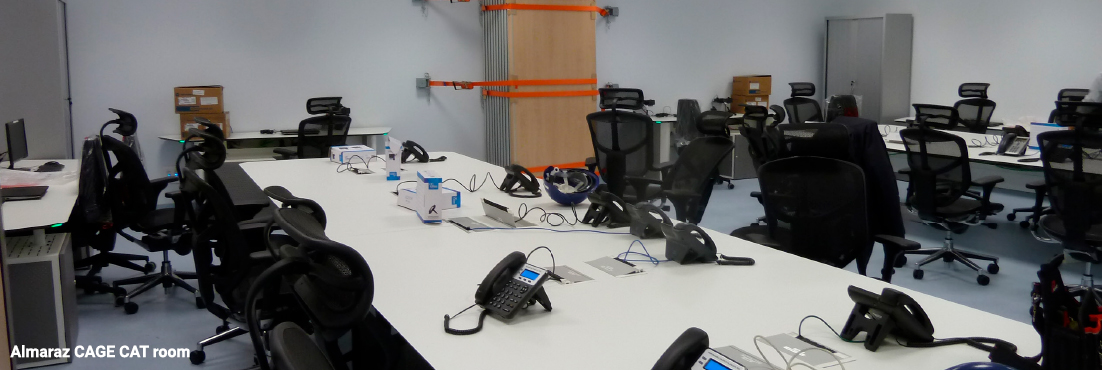
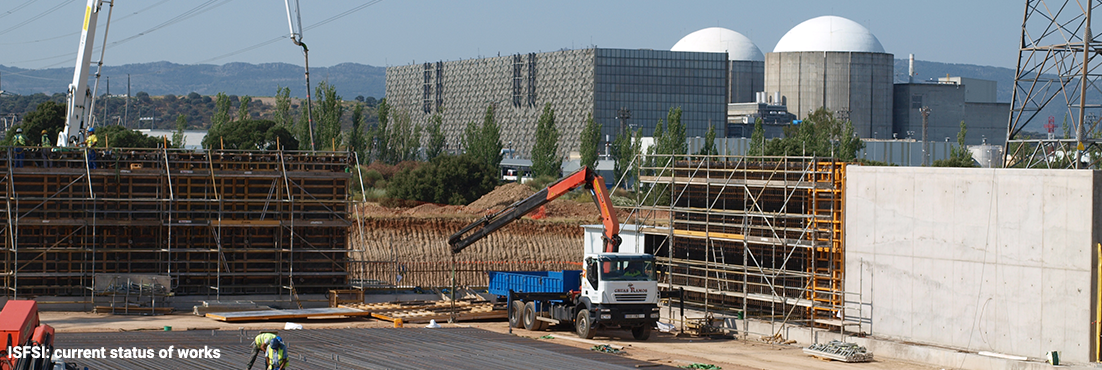
QUALITY
Quality is intrinsic to all activities at CNAT and is the main source of confidence for our owners, the social environment, employees and business partners. Since 1995, CNAT’s commitment to quality has been recognised by the Spanish Association for Standardisation (AENOR) by granting an official certificate, which certifies compliance of our Quality Management System with the UNE EN ISO 9001 standard for the production of electricity from nuclear sources. In 2016 AENOR carried out a follow-up audit to maintain certification of our Quality System and found it to be satisfactory.
Voluntary international evaluations were also requested to determine the degree of excellence of the organisation. These included the WANO Technical Support Mission (TSM) and INPO Technical Exchange Visits (TEV), which evaluate specific aspects regarding best practices in the industry, and in 2016 there were TSMs for the Almaraz Operational Indicators and for Leakage Management at Trillo, and a Risk Management TEV at the corporate level.
Continuous Improvement is part of CNAT’s organisational culture and that is why we manage annually about 8,000 corrective improvement and study actions, whose origin is not only independent internal evaluations (Quality Assurance audits and inspections), but also self-assessment by the units themselves of their activities and processes. In addition, trend analyses of low level incidents were conducted to enable identification of preventive actions to avoid incidents of greater severity.




